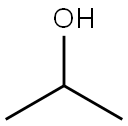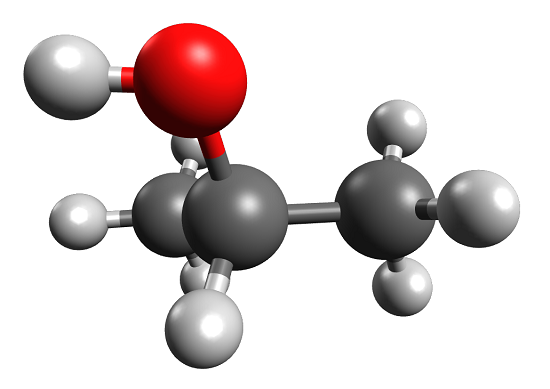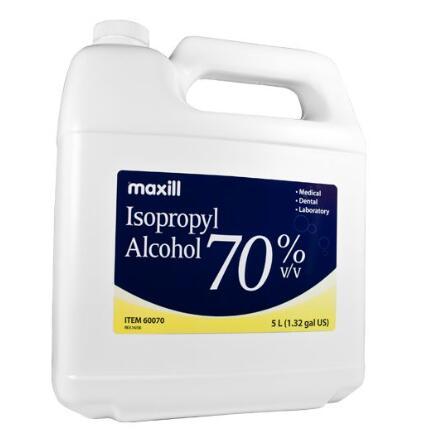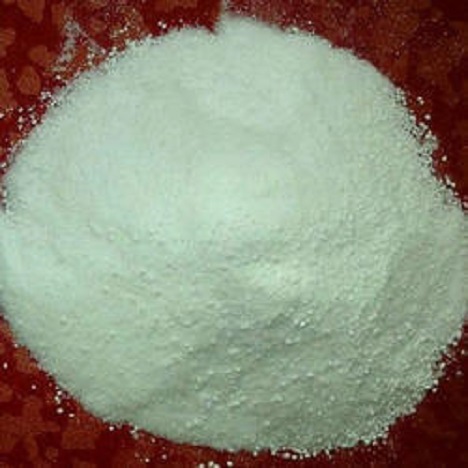Isopropyl Alcohol: Applications, Toxicity and Production
General Description
Isopropyl alcohol is the common name given to the compound propan-2-ol. The other common names generally used for this compound are isopropanol, isopropyl, and 2-propanol. Isopropyl alcohol is a colourless compound. This chemical compound is flammable in nature and possesses a strong odour. The Hydroxyl group is connected to an isopropyl group. Secondary alcohol is an alcohol that contains the alcohol bearing carbon atom attached to two other carbon atoms.
Thus, isopropyl alcohol is the simplest and smallest example of a secondary alcohol. Alcohols and ethers are functional isomers. Thus, ethyl methyl ether is a functional isomer of isopropyl alcohol. On the other hand, 1-propanol is the structural isomer of isopropyl alcohol. Isopropyl alcohol has a wide variety of uses in the manufacture of industrial and household chemicals. This organic compound is also a major ingredient in the production of major chemicals like detergents, disinfectants, and antiseptics.
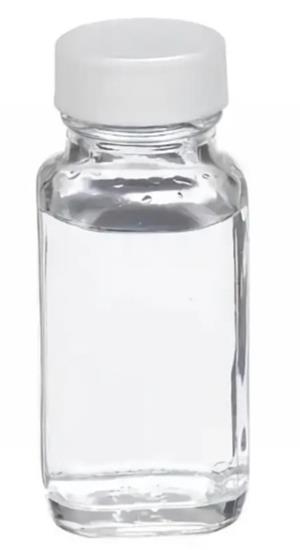
Figure 1. Properties of Isopropyl Alcohol
Applications
Electronics
Isopropyl alcohol is a common cleaner and degreaser of cables, connectors, electrical contacts, LCDs, keypads, glass, fiber optics, cables, keypads, and tape heads. Since water poses a shock hazard when working with electrical components, using water-free isopropyl alcohol to clean electronics is compulsory for safety. Additional steps such as submicron filtering are required to remove nano-sized contaminants that can disrupt electronic connections; therefore the cost of this premium product is higher. Containing only ppm level impurities, each lot is tested for 40 trace metals. With increasing concentration, the flash point of isopropyl alcohol is lowered while evaporation hastens, giving 99% purity potential for front end of the line (FEOL) washing of semiconductor wafers, printed circuit boards, and integrated circuits. Highly pure and nonpolar, it might be appropriate for rinsing away etchant salts, metal residues, thermal grease, and rosin solder flux. Exceptionally pure, anhydrous isopropyl alcohol 99% can be critical for dewatering and the final cleaning of wafers, silicon, solar cells, and fuel cells.
Extractives
Due to its ability to solubilize non-polar compounds, isopropyl alcohol is frequently used to process essential oils, fats, flavors, waxes, and nutraceuticals. It has been used to extract phospholipids and Omega-3 fatty acids from fish for the creation of high quality triglyceride oil. For crafting resins from botanicals, it might be employed as a co-solvent with ethanol for combining extraction and winterization in one step, streamlining the process. When a wax concentrate is preferred, a quick-wash extract with cold isopropyl alcohol might be the most efficient method.1
Coatings
Isopropyl alcohol is widely used in the coatings industry as a reagent for producing polymers as well as a dispersion agent for downstream. Intermediates that can be made from it include acetone, glycerol, methyl isobutyl ketone (MIBK), and bisphenol A, common precursors for resins and paints. MIKB, a solvent for surface coatings, can be synthesized by reacting a gaseous mixture of acetone and isopropyl alcohol with hydrogen in the presence of an Aldol condensation catalyst. Methyl methacrylate can be generated by condensing acetone and hydrogen cyanide and then copolymerized in an isopropyl alcohol solution to make acrylic. Isopropyl alcohol is a common diluent for resins and paints. For impregnating cellulosic or fiberglass substrates with resin, isopropyl alcohol might be used to thin saturating mixes to hasten penetration of the polymers into the media, after which it can be flashed off in an oven or left to dry. Because it dissolves uncured polymers, workers might also use it to wash tools, equipment, or spills.2
Pharmaceuticals
For manufacturing medicines, isopropyl alcohol is used to create, purify, and analyze compounds, as well as to decontaminate the reactors. Whether synthesizing amino acids, and polypeptides, it is a protic solvent is for many multi-step organic reactions. Isopropyl alcohol is also suitable for running lab analyses such as HPLC, GC, fluorescence, or TLC for characterization and quantification of chemicals. In 2009 there was a worldwide shortage of acetonitrile, a common solvent for reverse phase HPLC and UPLC, so scientists developed more eluent systems with isopropyl alcohol. Because this grade is micron filtered and has low non-volatile content, further filtration is not required. Since it is controlled for UV absorbance, it is suitable for critical analyses.3
Molecular biology
Histological grade isopropyl alcohol is free of DNases, RNases, and nucleic acids for preparing samples for downstream molecular reactions like spectrophotometric analysis, gel electrophoresis, restriction enzyme analysis, nucleotide sequencing, or polymerase chain reaction for nucleic acid detection. isopropyl alcohol is recommended for concentrating and purifying DNA when large sample sizes are available because it is efficient and fast. Keeping conditions at room temperature and minimizing incubation time should help prevent salt precipitation.4
Automotive
The automotive industry uses isopropyl alcohol for car care. Car detailers usually use isopropyl alcohol to strip waxes from cars before painting or polishing and to thin lacquer. Since it is a thawing agent, it is often added to windshield washes or to fuel tanks to solubilize water so that it does not separate out from the gas and freeze in the lines.
Personal Care Products
Isopropyl alcohol is frequently formulated into aftershaves, bath products, cosmetics, hand sanitizers, lotions, and perfumes as an extractant, diluent, anti-foam, or surfactant. It is extensively used in the nail care industry for making polishes and for cleaning nails. isopropyl alcohol in the polish aids smooth application and evaporates rapidly. Salon workers then use isopropyl alcohol to clean, imparting high shine to the nail surface. ACS/USP/NF grade is required for personal care products that are processed with isopropyl alcohol.
Medical
Isopropyl alcohol is used for general sterilization in medical facilities. Hospitals and clinics use isopropyl alcohol to sterilize medical equipment, to clean surfaces, and for skin treatments and dressing. Since it has a low flashpoint, it should be stored away from ignition sources.
Food Industry
The food industry uses isopropyl alcohol to process dyes, glazes, supplements, vinegar, and to sanitize surfaces, reactors, tools, and vats. Since standing water breeds bacteria, hydrophilic isopropyl alcohol washes it away, disinfecting equipment during evaporation. Free of toxic contaminants, USP grade isopropyl alcohol is suited for cleaning surfaces used to manufacture food or beverage.
Production
The primary method of production of isopropyl alcohol is by combining water and propene in a reaction called hydration. It can also be produced by the hydrogenation of acetone. In both the processes of the production of isopropyl alcohol, separation is required. The product isopropyl alcohol is required to be separated from by-products like water. This is done by the process of distillation.
In the case of simple distillation, isopropyl alcohol forms a solution that is 87.9% by weight isopropyl alcohol and the rest is water. This is an azeotropic solution and has a common boiling point of the mixture. Thus, to obtain pure isopropyl alcohol, we need to carry out azeotropic distillation. This process is done by using azeotroping agents like cyclohexane and di-isopropyl ether. The body also produces small amounts of isopropyl alcohol in the process of diabetic ketoacidosis.5
Indirect Hydration
Reaction of propene with sulfuric acid results in the formation of sulfate esters. Low-quality propene can be used in this type of indirect hydration. Adding sulfuric acid to propene follows Markovnikov's rule. The hydrolysis of these esters with the help of steam produces isopropyl alcohols. A major by-product of this reaction is diisopropyl ether. This compound is recycled back and again hydrolyzed to give the wanted product.
Direct Hydration
The reaction of propene and water in the liquid or gas phase, at relatively high pressures, resulting in direct hydration. This process takes place in the presence of solid acidic catalysts. The requirement of highly pure propane is present here.
Hydrogenation of Acetone
The hydrogenation of acetone is also used for the preparation of isopropyl alcohol. But this approach involves an additional step related to the above methods. This is because acetone is prepared by the cumene process on propene. This process seems efficient, economical and easy.
Toxicokinetics
Much like the other toxic alcohols, the absorption of isopropyl alcohol is rapid, with nearly 80% being absorbed within 30 minutes of ingestion. Approximately 80% of the absorbed isopropyl alcohol is metabolized by the liver through first-order kinetics and is broken down into acetone by the enzyme alcohol dehydrogenase. Typically, blood levels of isopropyl alcohol peak between 30 minutes and 3 hours of ingestion, and isopropyl alcohol has a half-life of 3 to 7 hours. When ethanol is co-ingested with isopropyl alcohol, the half-life of isopropyl alcohol is increased because ethanol has a higher affinity to alcohol dehydrogenase as compared to isopropyl alcohol. Acetone, however, has a half-life of 22 hours and is primarily excreted by the kidneys. A potentially lethal dose is 2 to 4 mL/kg, but case reports have noted survival in adults with higher reported levels.6
References
1. Drozdowski, B. & Ackman, R.G. J Am Oil Chem Soc (1969) 46: 371.
2. EP1931615A1
3. Ivo Nikolaev Sirakov, Marcelo L. Larramendy, Sonia Soloneski (2019) Nucleic Acid Isolation and Downstream Applications, Nucleic Acids - From Basic Aspects to Laboratory Tools.
4. Ankur M. Desai, Mark Andreae, Douglas G. Mullen, Mark M. Banaszak Holl, James R. Baker, Jr. Anal Methods, Author manuscript; available in PMC 2012 Jan 1. Published in final edited form as: Anal Methods. 2011 Jan Acetonitrile shortage: use of isopropanol as an alternative elution system for ultra/high performance liquid chromatography; 3(1): 56–58.
5. https://www.toppr.com/guides/chemistry/alcohols-phenols-and-ethers/isopropyl-alcohol/
6. Slaughter RJ, Mason RW, Beasley DM, Vale JA, Schep LJ. Isopropanol poisoning. Clin Toxicol (Phila). 2014 Jun;52(5):470-8.
);You may like
Related articles And Qustion
See also
Lastest Price from Isopropyl alcohol manufacturers
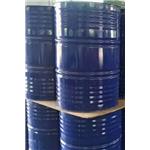
US $1500.00/kg2024-04-28
- CAS:
- 67-63-0
- Min. Order:
- 1000kg
- Purity:
- 99%
- Supply Ability:
- 1000kg/day
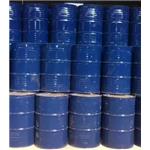
US $1500.00/kg2024-04-28
- CAS:
- 67-63-0
- Min. Order:
- 1000kg
- Purity:
- 99%
- Supply Ability:
- 1000kg/day
